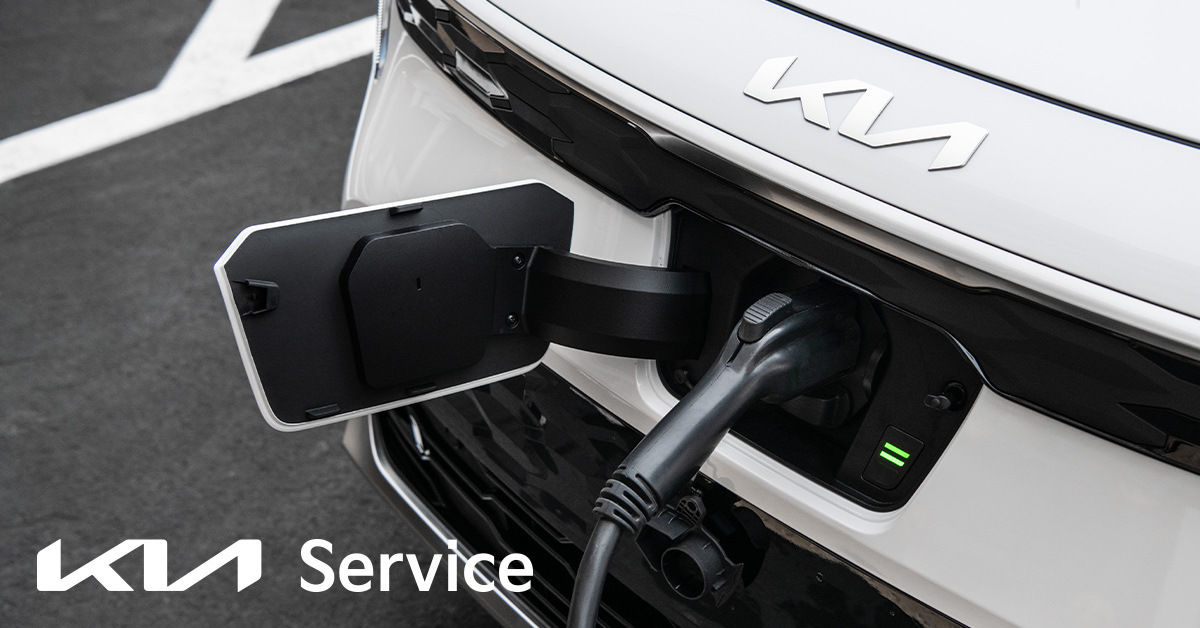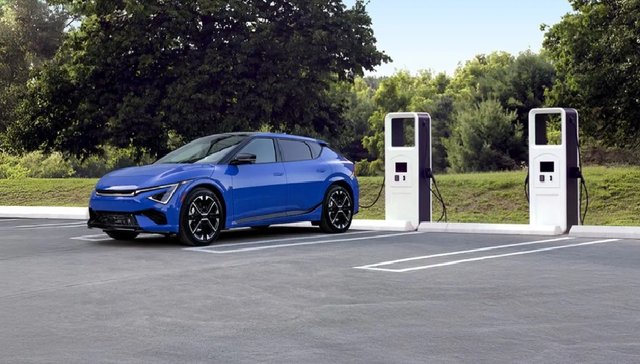Learn what kWh, range, and charging speeds mean for electric vehicles. Get the essentials on EV performance and charging in simple terms
As the automotive world shifts towards electrification, Kia has positioned itself at the forefront of this revolution with its impressive lineup of electric vehicles (EVs). However, for many consumers, transitioning from traditional internal combustion engines to EVs comes with a learning curve. One of the most significant challenges is understanding the new terminology associated with electric vehicles.
Kilowatt-Hours (kWh): The New Fuel Gauge
When you look at the specifications of a Kia EV, such as the popular EV6 or the Niro EV, you'll notice that battery capacity is measured in kilowatt-hours (kWh). But what exactly does this mean?
A kilowatt-hour is a unit of energy, not power. It represents the energy consumed when one kilowatt of power is used for one hour. In the context of EVs, kWh indicates how much energy the battery can store. Think of it as the equivalent of a fuel tank's capacity in a traditional car.
For example, the Kia EV6 is available with different battery options, including a 77.4 kWh battery pack. This means the battery can provide 77.4 kilowatts of power for one hour, 1 kilowatt for 77.4 hours, or any combination.
The larger the kWh rating, the more energy the battery can store, which generally translates to a longer driving range. However, it's important to note that the actual range depends on various factors, including driving conditions, temperature, and vehicle efficiency.
Understanding kWh is crucial when comparing different EV models. It allows you to gauge the potential range and performance of the vehicle. Additionally, kWh is used to calculate charging times and energy costs, making it an essential metric for EV owners to understand.
Range: How Far Can You Go?
Range is perhaps the most straightforward concept for those transitioning from traditional vehicles to EVs. Range refers to the distance an electric vehicle can travel on a single full charge. However, understanding the nuances of EV range is crucial for making informed decisions and managing your vehicle effectively.
Like other EV manufacturers, Kia provides estimated range figures for their vehicles. For instance, the Kia EV6 with its 77.4 kWh battery, can achieve a range of up to 528 kilometers on a single charge, according to the WLTP (Worldwide Harmonised Light Vehicle Test Procedure) cycle.
However, it's essential to understand that these figures are estimates based on standardized testing procedures. Real-world range can vary significantly based on several factors:
- Driving Style: Aggressive acceleration and high-speed driving can reduce range.
- Weather Conditions: Extreme temperatures, especially cold, can impact battery performance and reduce range.
- Terrain: Hilly or mountainous routes consume more energy than flat roads.
- Vehicle Load: Additional weight from passengers or cargo can decrease range.
- Use of Climate Control: Running the air conditioning or heating system draws power from the battery.
Kia EVs come with sophisticated range estimation systems that consider these factors, providing more accurate real-time range predictions. Understanding these variables allows EV owners to plan their trips more effectively and manage their vehicle's energy consumption.
Charging Speeds: Powering Up Your Kia EV
The third crucial concept in EV terminology is charging speed. Unlike refuelling a traditional vehicle, which takes just a few minutes, charging an EV can take anywhere from 30 minutes to several hours, depending on the charging method and the vehicle's capabilities.
Charging speeds are typically expressed in kilowatts (kW). The higher the kW rating, the faster the charging speed. Kia EVs support various charging speeds, which can be categorized into three main types:
- Level 1 Charging (AC): This is the slowest charging method, typically using a standard 120V household outlet. It provides about 1.9 kW of power, adding roughly 3-8 kilometers of range per hour of charging. While slow, it's convenient for overnight charging at home.
- Level 2 Charging (AC): This method uses a 240V outlet, similar to what large appliances use. It can provide anywhere from 3.3 kW to 19.2 kW, with most home chargers operating at 7.2 kW. At this rate, you can add about 40-80 kilometers of range per hour, making it suitable for overnight or workplace charging.
- DC Fast Charging: This is the fastest charging method, capable of adding hundreds of kilometers of range in just 30 minutes. Kia's latest EVs, like the EV6, support ultra-fast charging up to 350 kW, allowing for a 10-80% charge in just 18 minutes under ideal conditions.
It's important to note that the actual charging speed can be limited by factors such as the vehicle's maximum charging rate, the state of the battery (charging slows as the battery nears full capacity), and environmental conditions.
Understanding these charging speeds is crucial for planning longer trips and managing your daily charging routine. Kia provides detailed charging information for each of its EV models, allowing owners to make informed decisions about their charging strategy.
Putting It All Together: The EV Ecosystem
Now that we've explored kWh, range, and charging speeds, let's look at how these concepts work together in the real world of EV ownership.
Consider a Kia EV6 with a 77.4 kWh battery and a WLTP range of 528 kilometers. If you're planning a 400-kilometer trip, you might think you can complete it on a single charge. However, factors like highway driving, weather conditions, and use of climate control might reduce your actual range.
Using the vehicle's range estimation system, you determine that you'll need to stop for a charge. You locate a DC fast-charging station along your route. With the EV6's 350 kW charging capability, you can add about 300 kilometers of range in just 18 minutes, allowing you to complete your journey with minimal delay.
This scenario illustrates how understanding kWh (your energy capacity), range (how far you can go), and charging speeds (how quickly you can replenish your energy) all come together to inform your EV usage and trip planning.
As you become more familiar with these terms and how they apply to your specific Kia EV model, you'll find that managing your vehicle's energy becomes second nature. The initial learning curve gives way to an intuitive understanding of your vehicle's capabilities, allowing you to fully enjoy the benefits of electric mobility.
Empowering Kia EV Owners
Understanding EV terminology is more than just learning new words; it's about gaining the knowledge to make the most of your electric vehicle. By grasping concepts like kilowatt-hours, range, and charging speeds, Kia EV owners can:
- Make informed decisions when choosing an EV model that suits their lifestyle and driving needs.
- Plan trips more effectively, knowing when and where to charge.
- Optimize their vehicle's performance and efficiency.
- Communicate more effectively with service providers and other EV owners.
As Kia continues to innovate in the EV space, staying informed about these fundamental concepts will help you appreciate and utilize the advanced features of your vehicle. Whether you're considering your first EV purchase or you're already enjoying the benefits of electric driving, this knowledge empowers you to make the most of your Kia EV experience.
Remember, the world of EVs is rapidly evolving, with advancements in battery technology, charging infrastructure and vehicle design happening all the time. Staying curious and continuing to learn about your Kia EV will ensure you're always at the forefront of this exciting automotive revolution.
To learn more visit Kia.ca






